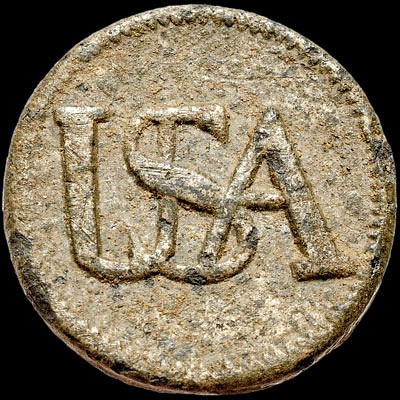1786 CHARLES THOMSON Continental Congress, Secretary of Congress Signed Document
Lot 33
Estimate:
$1,200 - $1,800
Absentee vs Live bid
Two ways to bid:
- Leave a max absentee bid and the platform will bid on your behalf up to your maximum bid during the live auction.
- Bid live during the auction and your bids will be submitted real-time to the auctioneer.
Bid Increments
| Price | Bid Increment |
|---|---|
| $0 | $10 |
| $200 | $20 |
| $300 | $25 |
| $500 | $50 |
| $1,000 | $100 |
| $2,000 | $200 |
| $3,000 | $250 |
| $5,000 | $500 |
| $10,000 | $1,000 |
| $20,000 | $2,000 |
| $30,000 | $2,500 |
| $50,000 | $5,000 |
| $100,000 | $10,000 |
| $200,000 | $20,000 |
| $300,000 | $25,000 |
| $500,000 | $50,000 |
About Auction
By Early American History Auctions
Aug 21, 2021
Set Reminder
2021-08-21 12:00:00
2021-08-21 12:00:00
America/New_York
Bidsquare
Bidsquare : Autographs - Historic & Political Americana - Militaria & Guns
https://www.bidsquare.com/auctions/early-american-history-auctions/autographs---historic-political-americana---militaria-guns-7321
335 Lots of Rare, Historic Autographs, Americana, Civil War Era, George Washington, Revolutionary War Era, Colonial America, Federal Period, War of 1812, Colonial Currency & more... Early American History Auctions auctions@earlyamerican.com
335 Lots of Rare, Historic Autographs, Americana, Civil War Era, George Washington, Revolutionary War Era, Colonial America, Federal Period, War of 1812, Colonial Currency & more... Early American History Auctions auctions@earlyamerican.com
- Lot Description
Autographs
Charles Thomson Continental Congress Secretary Signed Congressional Circular Transmittal Document to "His Excellency The President of New Hampshire" Dated 1786
CHARLES THOMSON (1729-1824). American Patriot Leader in Philadelphia during the American Revolution, the First and Only Secretary of the Continental Congress throughout its existence (1774-1789), helped to Design the "Great Seal" of the United States.
October 4, 1786-Dated, Manuscript Circular Document Signed, "Cha(rle)s Thomson", addressed to "His Excellency The President of New Hampshire" (Ex: Revolutionary War General John Sullivan), 1 page, measuring 8" x 10", Choice Extremely Fine. This impressive high quality handwritten Document being sent to the President of New Hampshire for transmitting copies of a Congressional Journal from the "Office of Secretary of Congress." It has excellent eye appeal being exceptionally attractive in the quality of its fancy penmanship. It is written on clean, fine quality laid period paper.
From 1786 to 1791, the title: "President of the State of New Hampshire" was the official position now referred to as Governor, as the New Hampshire Constitution was amended in 1791 to officially replace the title of "President" with "Governor". At this time in 1786, Revolutionary War General John Sullivan (1740-1795) of the Federalist Party, was Acting "President" due for the receipt of this Document (serving between June 7, 1786 to June 4, 1788). Docket on the blank reverse reads: "from the Secretary of Congress enclosing Journals of Congress October 4, 1786...". A historic, fully original Charles Thomson Signed Continental Congress Circular Transmittal Document to "His Excellency The President of New Hampshire."
Charles Thomson (November 29, 1729 - August 16, 1824) was an Irish-born Patriot leader in Philadelphia during the American Revolution and the Secretary of the Continental Congress (1774-1789) throughout its existence.
John Adams called him the "Samuel Adams of Philadelphia". Thomson served as the secretary of the Continental Congress through its entirety. Through those 15 years, the Congress saw many delegates come and go, but Thomson's dedication to recording the debates and decisions provided continuity. Along with John Hancock, president of the Congress, Thomson's name (as secretary) appeared on the first published version of the Declaration of Independence in July 1776.
Thomson's role as secretary to Congress was not limited to clerical duties. According to biographer Boyd Schlenther, Thomson "took a direct role in the conduct of foreign affairs." Fred S. Rolater has suggested that Charles Thomson was essentially the "Prime Minister of the United States".
Thomson is also noted for designing, together with William Barton, the "Great Seal" of the United States. The Great Seal played a prominent role in the January 14, 1784, (Ratification Day) ratification of the Treaty of Paris. Britain's representatives in Paris initially disputed the placement of the Great Seal and Congressional President Thomas Mifflin's signature, until mollified by Benjamin Franklin.
But Thomson's service was not without its critics. James Searle, a close friend of John Adams, and a delegate, began a cane fight on the floor of Congress against Thomson over a claim that he was misquoted in the "Minutes" that resulted in both men being slashed in the face. Such brawls on the floor were not uncommon, and many of them were promoted by argument over Thomson's recordings.
Political disagreements prevented Thomson from getting a position in the new government created by the United States Constitution. Thomson resigned as Secretary of Congress in July 1789 and handed over the Great Seal, bringing an end to the Continental Congress.
He spent his final years at Harriton House in Bryn Mawr, Pennsylvania working on a translation of the Bible. He also published a synopsis of the four evangelists in 1815. In retirement, Thomson also pursued his interests in agricultural science and beekeeping.
- Shipping Info
-
Early American provides in-house worldwide shipping. Please contact us directly if you have questions about your specific shipping requirements.
-
- Buyer's Premium



 EUR
EUR CAD
CAD AUD
AUD GBP
GBP MXN
MXN HKD
HKD CNY
CNY MYR
MYR SEK
SEK SGD
SGD CHF
CHF THB
THB













